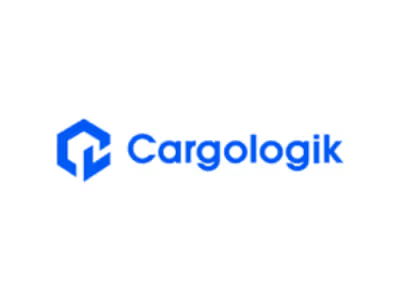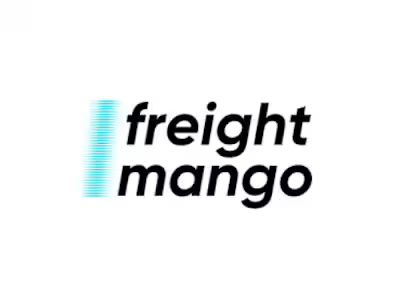2,000-word blog for Hive: SKU meaning: What does SKU stand?

SKU stands for Stock Keeping Unit. An SKU is a unique, scannable code that retailers allocate to a product to keep track of inventory internally - once it has been received from a distributor or warehouse. An SKU number is typically an eight digit alphanumeric code, but can be up to 12 characters, that features on a product's packaging.
What is the difference between an SKU and a UPC code?
An SKU number should not be confused with a UPC. A UPC (Universal Product Code) is a 12-digit number, commonly known as a barcode number, which is used worldwide to track items in stores. UPCs are strictly numbers, while SKUs are a combination of numbers and letters.
SKUs are also unique to each retailer, while UPCs are consistent across all retailers. One of the key differences between the two codes is that SKUs are for internal use, while UPCs are for external use.
SKUs are a useful tool for business-specific inventory management. SKU codes can be customized to represent the most important features of your products and providing information on the key characteristics of a product, including but not limited to:
Color
Style
Brand
Type
Size
Price
SKUs are free to create, totally customizable and much more granular than UPCs and they are useful for managing inventory. With a POS (point-of-sale) system, retailers can utilize SKUs for tracking sales and calculating data.
Meanwhile UPCs make e-commerce businesses more compatible with the retail supply chain. For businesses looking to expand, UPCs are essential for making products universally compatible. However, UPC-registered products can, and should, maintain SKUs for internal inventory management.

How are SKUs used in e-commerce?
E-commerce businesses use SKUs to manage their inbound and outbound logistics. They are particularly useful for e-commerce retailers who work with third-party order fulfillment providers. When partnering with a third-party logistics (3PL) provider, one of the first questions a 3PL will ask is 'how many different SKUs are in your inventory?'
This gives 3PL providers an indication of how much storage and warehousing space will be required in their order fulfillment centers. Most 3PL companies will store each unique SKU on its own shelf space to optimize the picking and packing process.
Partnering with a 3PL company provides a comprehensive way to manage inventory, based on using SKUs. 3PL companies can offer:
Inventory synchronization by automatically retrieving SKUs from an online store
Real-time inventory levels by SKU
Alerts to low stock levels based on each SKU
Product merging across e-commerce platforms
Ultimately, 3PL providers not only use SKUs to manage inventory, but to offer customized and in-depth data and services for your e-commerce business.
Find out more about what working with a 3PL company involves here.

SKU management best practices
SKU management is the process of creating, optimizing and maintaining a Stock Keeping Unit system to effectively organize and identify inventory. Setting up an efficient SKU system improves the responsiveness and effectiveness of order fulfillment. Here are some SKU management best practices:
1 - Your SKUs should be easy to understand
Do not make your SKU numbers overly complicated. Ensure that you stick to the key details of your products such as color, size, type and seasonal variations - these must be included in an SKU to help with identifying items in your inventory. Try to avoid loading numbers and assigning them a meaning. For example, 1 is blue or 15 is purple or 23 is yellow.
This can quickly become a confusing string of numbers. If you opt to do this, you could end up wasting resources on trying to crack the code. The more straightforward your SKU numbers are, the easier it is for everyone to manage.
For example, imagine you have a winter 2021 hoodie, medium, yellow. Your SKU code could look something like this: WH21-MY - the WH stands for winter hoodie, the 21 stands for the year it was in season and the MY stands for medium size in yellow.
2 - Organize the details of an item in order of importance
Taking the example above, we described a product using a specific season, a size and a color. For your items, think about what their most important features are and use these to create your SKUs. Using our example, you might have different hoodies for different seasons every year, so listing the season and year at the start of your SKUs will help you narrow down your search for specific inventory items.
3 - Avoid using special characters and letters that look like numbers
Avoid letters like O, which can easily be mistaken for a zero (0). If you use Microsoft Excel to store your SKUs, try and avoid using the '/' symbol as Excel might format your SKU code as a date instead. Also, using special characters such as '#', '<', '>' or letters with accents - āăűȔ - can have unintended consequences.
If in doubt, just use spaces instead.
What to consider when thinking about SKUs and costs
In addition to these best practices, it is worth knowing that a higher number of SKUs means higher fulfillment costs. This is because a large SKU count will take up more time and space in your order fulfillment process.
The more SKUs you have, the more time it will take for them to be entered into a warehouse management system (WMS). Whether you manage your own distribution or you have a 3PL partner, a high number of SKUs can make things more time consuming and increases the risk of mispicks. A larger SKU count also means increased picking time which could impact the time between your customer ordering and it arriving at their door.
Also, the more SKUs you have, the higher your costs could be because there is an increased need for warehouse space. This is especially true if you have a bulk storage facility that is separate from your picking facility. Bigger warehouses mean higher overhead costs.
To help you with creating SKUs, you should follow the 80/20 rule - otherwise known as the Pareto Principle. In the order fulfillment space, the Pareto Principle indicates that 80% of your overall sales are most likely generated by approximately 20% of your SKUs.
Applying the 80/20 rule to your order fulfillment means prioritizing those products that generate the most profit for your business. The SKUs allocated to these products should be easy to find and tracked effectively. Using the 80/20 strategy, combined with well-timed SKU replenishment, will save you time and money, while significantly enhancing your order fulfillment.

How to create SKU numbers
Once you have inputted your SKU codes into your inventory system, you will need to create a scannable version of your Stock Keeping Unit codes to include on your product labels. Having an SKU scanner makes check out and inventory tracking much simpler.
There are hundreds of free to use SKU number generators you can use to create scannable codes that can then be downloaded and printed. If you are using automated inventory management software or a POS system, SKU codes should have automatically been created when you entered your products into the system.
The benefits of SKUs in business
Done right, SKUs help e-commerce businesses to organize, track, find and identify inventory using a system that works for everyone. Combining letters and numbers means SKUs give businesses great flexibility in terms of creating codes that are customized for their needs.
The ultimate benefit of SKUs is that they make businesses more efficient and more profitable, but they offer a range of other benefits, including:
Theft minimization - in warehouses storing thousands of products, missing items could be overlooked. Inventory shrinkage is becoming an increasingly common problem for business owners.
With SKUs, businesses can quickly narrow down products to their individual codes, which makes it far more difficult for items to go missing, and therefore, reducing the opportunity for items to be stolen.
Store organization - SKU numbers can help you to effectively map and organize your store, enabling shoppers and staff to locate your products in-store. You can quickly track products by item type, department, collection, or vendor so that finding items on the sales floor and in storage areas is really easy.
Setting reorder points - SKU numbers can alert you to low stock levels and allow you to set reorder points for each product and its variants. This means that you are always aware of when you need to reorder stock. You will also be able to identify which products are selling best to help you decide where to invest and what you should perhaps discontinue.
The ability to set individual reorder points means that you will never have to worry about going out of stock or unnecessary costs for excess stock.
Knowing what customers want - SKUs quickly allow you to determine what customers want, where you can cut costs and where you should invest. The more you know about stock levels and product movements, the better positioned you are to make data-driven decisions.
Partner with Hive - a 3PL provider
Providing SKU codes to a 3PL provider like Hive gives you a complete inventory management solution. You can quickly connect your shop software to Hive in a few simple clicks. You can choose which SKUs you want to fulfill with us, and even connect multiple local country shops to a singular set of SKUs.
Learn more about our product and how you can track, analyze, plan and scale your inventory management here.
Like this project
Posted Aug 18, 2023
A 2,000-word, ghost written SEO blog for Hive covering Stock Keeping Units (SKUs) and how they impact logistics operations.








